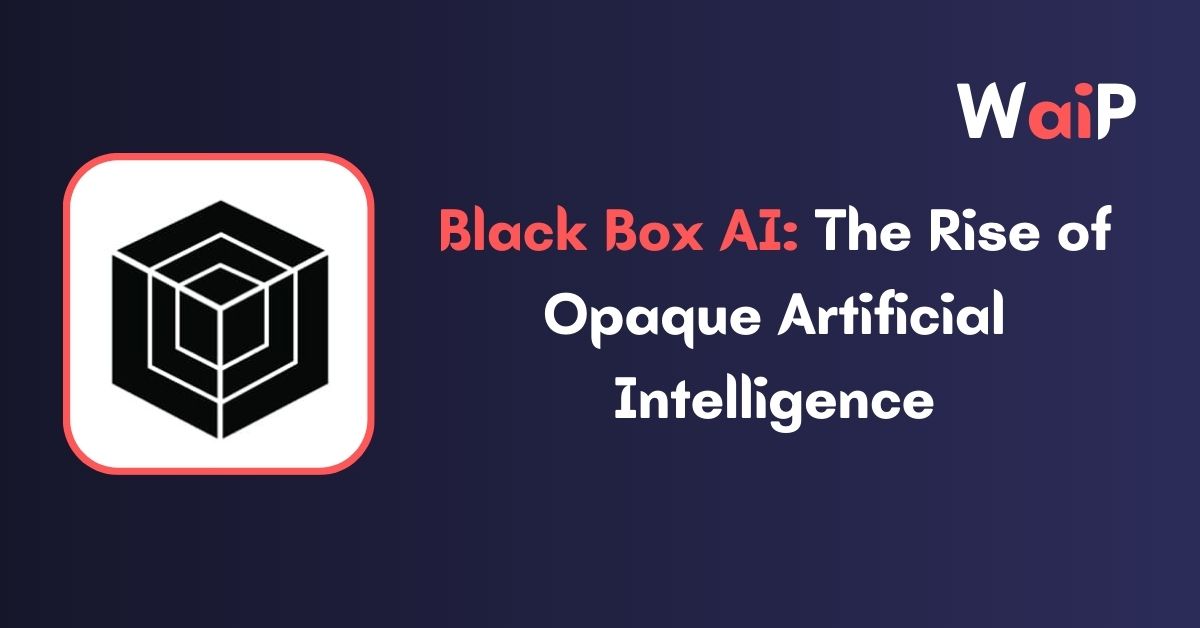Now, as we delve into the mysteries of Black Box AI, the realm of Artificial Intelligence has taken a step forward with the introduction of a novel approach to handling complex datasets and decision making.
If you’ve been searching for an in-depth guide on what exactly is a Black Box AI and how it functions, you’ve come to the right place!
In this article, we’re going to unveil the world of Black Box AI models and provide you with a comprehensive understanding of their operations, their benefits, their challenges, and their real-world applications.
We’ll also offer insights into the future of Black Box AI and discuss why this concept holds such importance in the realm of AI. Continue reading the following sections for an intriguing deep-dive into the black box!
Introduction to Black Box AI: Unraveling the Enigma
Picture a machine learning model that processes information and generates outputs without revealing the intricate internal workings of how it arrived at those conclusions.
Such models are known as Black Box AI models. These opaque models are what make certain applications of artificial intelligence possible, despite the lack of visibility into their operations.
In contrast to these, there exist White Box models that are transparent, allowing you to see and understand the process from input to output.

Why does Black Box AI exist? It’s primarily due to the need for generating accurate predictions in scenarios with countless variables. Black Box models excel in handling vast amounts of data and discerning patterns which would be otherwise challenging to perceive.
The Strengths of Black Box AI
Black Box AI models come with several advantages. Their forte lies in handling large and complex datasets.
The ability to process a tremendous volume of data and discern patterns at high speeds makes Black Box AI an essential asset across different industries.
Moreover, Black Box AI models aren’t restricted to one specific application. Their adaptability allows them to be employed in various tasks across numerous problem domains.
The Challenges of Black Box AI
Despite the array of benefits that Black Box AI models offer, they come with their share of drawbacks. The main issue lies in their lack of transparency. With hidden operations, it’s often tough to understand why a specific decision was made.
This opacity leads to difficulties in validating results, pinpointing errors, or detecting biases. In fact, real-world biases present in training data could be inadvertently propagated by these models, leading to skewed predictions.
Another challenge lies in the debugging of these models. Without visibility into their internal mechanics, identifying the origin of errors becomes a formidable task.
Understanding the Machinery: How Does Black Box AI Function?
At the heart of Black Box AI lies deep learning. This type of machine learning employs artificial neural networks inspired by the human brain.
These networks learn from large amounts of data to identify intricate patterns and correlations.
During the training phase, a black box model is fed with vast amounts of data. It learns to identify complex patterns within this data. Once trained, the model can make predictions based on new data. However, the exact logic or rules it uses to reach these predictions remains hidden within the black box.
The Applications of Black Box AI: Theory in Practice
The applications of Black Box AI are numerous and varied. They range from image recognition and natural language processing to fraud detection, and many more. Despite the opacity of these models, their versatility and accuracy have driven their adoption across many fields.
Where is Black Box AI Heading?
The landscape of Black Box AI is continually evolving. Current trends hint towards a balance between the models’ performance and interpretability.
With ongoing research, we may witness an increase in transparency, leading to a better understanding of the decision-making process of these models.
Furthermore, Black Box AI is likely to find applications across even more industries, revolutionizing them with its power to process vast amounts of data and generate accurate predictions and insights.
FAQs: Black Box AI
-
What is Black Box AI?
Black Box AI refers to machine learning models that process information and generate outputs without revealing the intricate internal workings of how those conclusions are arrived at.
-
What are the advantages of Black Box AI?
Black Box AI models have several advantages. They are capable of handling large and complex datasets, discerning patterns at high speeds, and are adaptable to various tasks across numerous problem domains.
-
What are the challenges of Black Box AI?
Despite their benefits, Black Box AI models have a few drawbacks. The primary issue lies in their lack of transparency. It’s often hard to understand why a specific decision was made, making it difficult to validate results, pinpoint errors, or detect biases.
-
How does Black Box AI function?
Black Box AI employs deep learning, a type of machine learning that uses artificial neural networks inspired by the human brain. During the training phase, a black box model is fed with vast amounts of data. It learns to identify complex patterns within this data.
-
What are the applications of Black Box AI?
Black Box AI has numerous and varied applications, ranging from image recognition and natural language processing to fraud detection. Despite the opacity of these models, their versatility and accuracy have led to their adoption across many fields.
Conclusion
Black Box AI models are both intriguing and impactful. Their ability to handle massive data volumes, discern complex patterns, and make accurate predictions makes them a valuable asset in today’s data-driven world. Yet, they are shrouded in mystery, with their internal operations hidden from view.
However, it’s crucial to recognize and address the challenges that come with Black Box AI. The lack of transparency raises concerns related to trust, accountability, and fairness. As we continue to unlock the potential of Black Box AI, we must strive to harness this technology responsibly, ensuring ethical and transparent usage.
As we navigate this intriguing world of Black Box AI, stay tuned as we continue to explore, learn, and grow in our understanding of this fascinating facet of artificial intelligence. It’s not just about unraveling the mystery – it’s about harnessing its power to transform our world.

![Best Mobile Games Your Should Try in 2024 [Trending Now] 2 Best Mobile Games](https://wideaiprompts.com/wp-content/uploads/2024/03/Best-Mobile-Games-330x220.webp)



![Best Mobile Games Your Should Try in 2024 [Trending Now] 10 Best Mobile Games](https://wideaiprompts.com/wp-content/uploads/2024/03/Best-Mobile-Games-150x150.webp)


